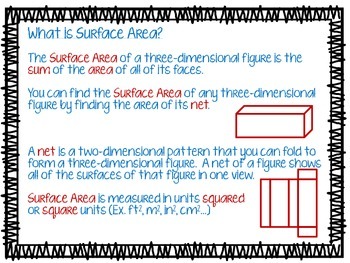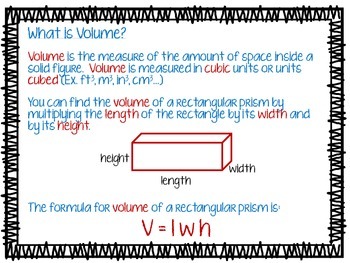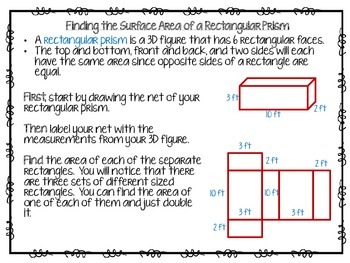Surface Area (Prisms and Pyramids) and Volume Lab
Deborah Kirkendall
179 Followers
Grade Levels
6th - 7th, Homeschool
Subjects
Resource Type
Standards
CCSS6.G.A.2
CCSS6.G.A.4
CCSS7.G.B.4
Formats Included
- PDF
Pages
49 pages
Deborah Kirkendall
179 Followers
Description
Surface Area and Volume Lab--No Materials Required!
What's Included:
Surface Area and Volume Notes
Formulas for Surface Area of Prisms (Rectangular, Triangular, Pentagonal, Hexagonal, Octagonal), Surface Area of Pyramids (Square, Rectangular, Triangular, Pentagonal, Hexagonal, and Octagonal) and Volume of Rectangular Prisms.
Nets of 3D Shapes (Illustrated)
Practice problems for each prism and pyramid
Answer Keys for each practice problem
Surface Area in the Real World mini-project and sample
49 pages
(Printing Suggestion--print "multiple" and "landscape" to fit two per page to save on printing)
CCLS 6.G.A2, 6.G.A4, 7.G.B4
Check out my Area and Surface Area and Volume Showdown Games in my store that are a great complement to this activity!
What's Included:
Surface Area and Volume Notes
Formulas for Surface Area of Prisms (Rectangular, Triangular, Pentagonal, Hexagonal, Octagonal), Surface Area of Pyramids (Square, Rectangular, Triangular, Pentagonal, Hexagonal, and Octagonal) and Volume of Rectangular Prisms.
Nets of 3D Shapes (Illustrated)
Practice problems for each prism and pyramid
Answer Keys for each practice problem
Surface Area in the Real World mini-project and sample
49 pages
(Printing Suggestion--print "multiple" and "landscape" to fit two per page to save on printing)
CCLS 6.G.A2, 6.G.A4, 7.G.B4
Check out my Area and Surface Area and Volume Showdown Games in my store that are a great complement to this activity!
Total Pages
49 pages
Answer Key
Included
Teaching Duration
N/A
Report this resource to TPT
Reported resources will be reviewed by our team. Report this resource to let us know if this resource violates TPT’s content guidelines.
Standards
to see state-specific standards (only available in the US).
CCSS6.G.A.2
Find the volume of a right rectangular prism with fractional edge lengths by packing it with unit cubes of the appropriate unit fraction edge lengths, and show that the volume is the same as would be found by multiplying the edge lengths of the prism. Apply the formulas 𝘝 = 𝘭 𝘸 𝘩 and 𝘝 = 𝘣 𝘩 to find volumes of right rectangular prisms with fractional edge lengths in the context of solving real-world and mathematical problems.
CCSS6.G.A.4
Represent three-dimensional figures using nets made up of rectangles and triangles, and use the nets to find the surface area of these figures. Apply these techniques in the context of solving real-world and mathematical problems.
CCSS7.G.B.4
Know the formulas for the area and circumference of a circle and use them to solve problems; give an informal derivation of the relationship between the circumference and area of a circle.





